The Big Picture
- Ribonucleic acid, shortened to RNA, is one of the most versatile molecules of life.
- DNA and RNA are very similar molecules, and just like all living organisms have DNA, all living organisms have RNA as well.
- There are many different types of RNAs that have many different functions. Some types of RNAs are only found in certain organisms.
- The functions of RNA are broad and include carrying biological information, providing structure, facilitating chemical reactions and regulating the functions of DNA and other RNA molecules.
- Because of all these different roles, some researchers believe that life on earth began with an RNA molecule capable of copying itself. This is known as the RNA World Hypothesis.
How is RNA different from DNA?
Chemically, RNA and DNA are very similar, but they perform different biological roles. Both RNA and DNA are made up of chemical units called nucleotides that are joined together in long chains. While DNA is typically double-stranded, forming a ladder-like structure, RNA is often, but not always, single-stranded.
These structural differences help these molecules perform their unique roles. DNA is the genetic material for all life, usually existing in long strands that are passed down from generation to generation.
RNA molecules range widely in their lengths and are often more transient than DNA. If DNA is like an archive, RNA molecules are like scans or photocopies of specific documents from the archive. The DNA stores all the necessary information for an organism, and the RNA replicates and distributes pieces of this information as needed.
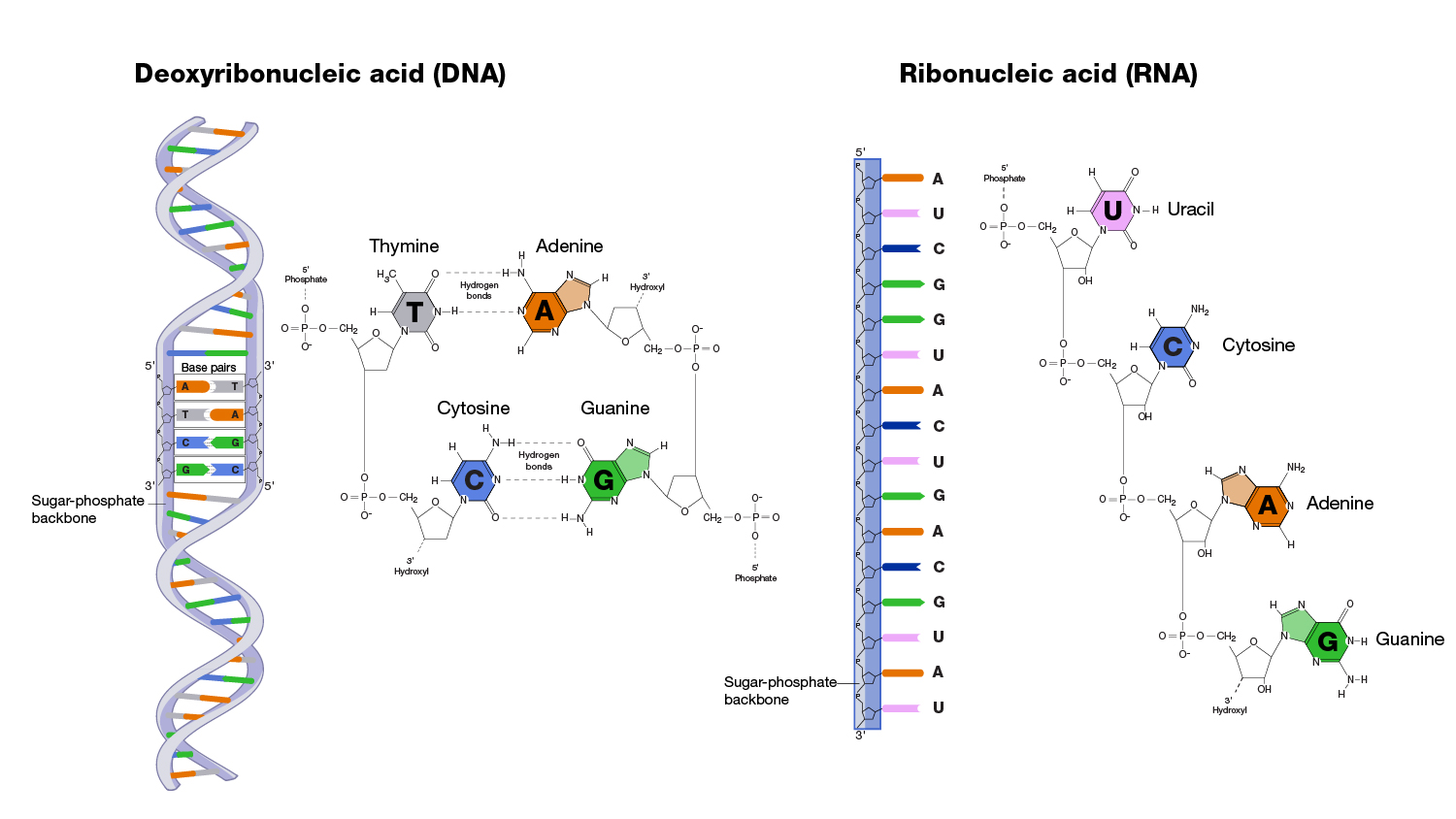
How is RNA made?
RNA molecules are made by a process called transcription. In RNA, there are four different nucleotides, abbreviated by the first letters of their chemical names: A, U, C, and G. Each of these nucleotides has a complementary nucleotide that makes up the DNA strand.
During transcription, the DNA serves as a template, and the RNA molecule is assembled using the complementary nucleotides. This results in a strand of RNA that carries the information encoded in the DNA, and this information helps the RNA do its job in the cell.
This process, where a gene produces RNA molecules, is also referred to as gene expression.
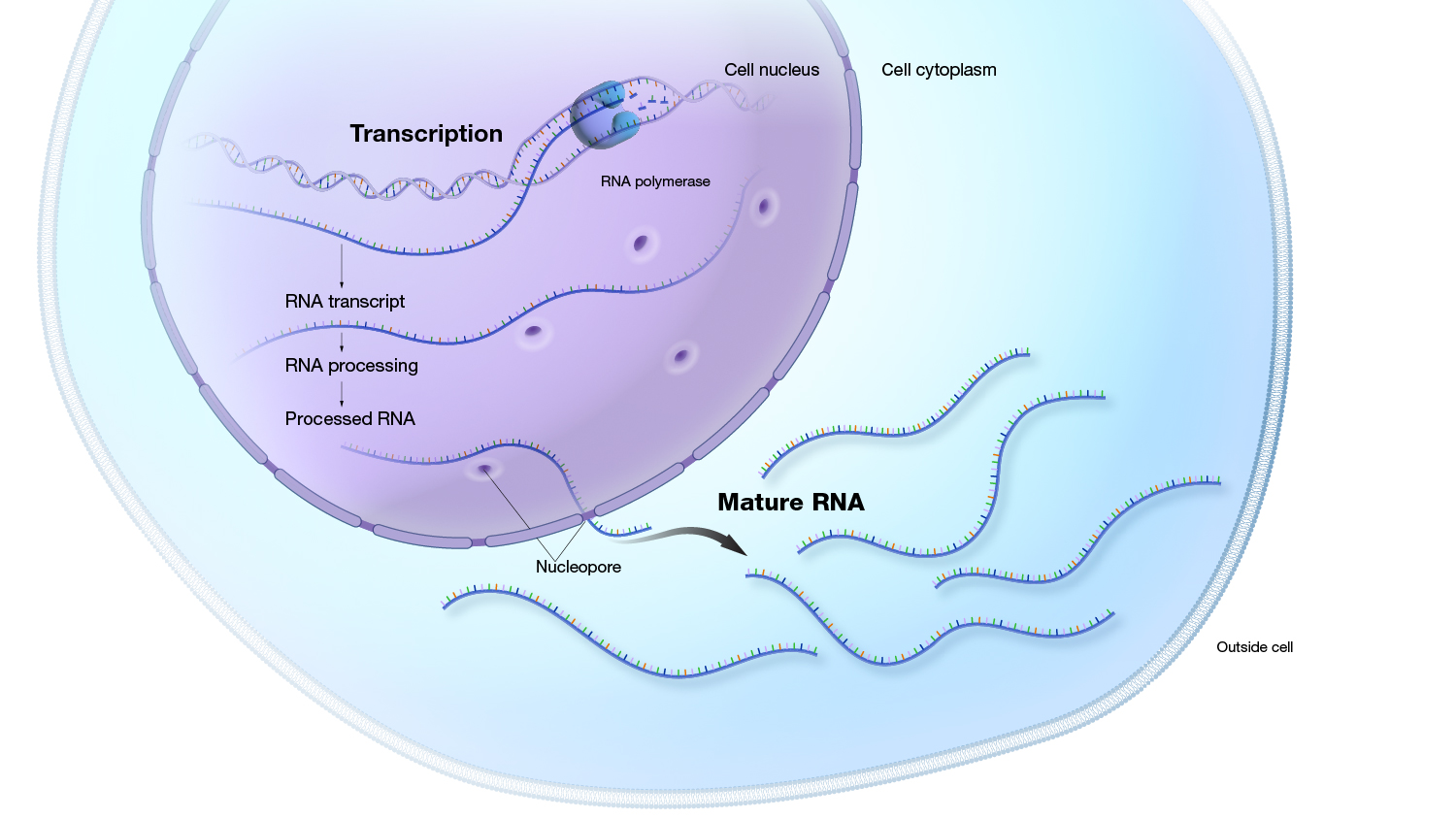
One gene can produce many different RNAs
Although DNA serves as RNA’s template, the final RNA sequence is often not an exact copy of the DNA sequence. Some regions of the RNA sequence, known as introns, can be cut out of the RNA in a process called RNA splicing.
Splicing is most often studied in relation to messenger RNAs, or mRNAs, which are a type of RNA that carries the information required for making proteins and is discussed further below. In mRNAs, the pieces of sequence left in the mature mRNA are known as exons, and these sequences contain the information needed to create proteins. Other types of RNAs can also undergo splicing, which is a growing area of research.
Alternative splicing is a type of RNA splicing where different exons are included or excluded from the final RNA sequence, generating different RNA molecules from the same gene in the genome. When mRNAs are alternatively spliced, mRNAs from the same gene can create different proteins that may have different functions.
About 95% of human genes are thought to be alternatively spliced, and some RNAs can be alternatively spliced in many ways. Researchers have already identified over 150,000 unique mRNAs in human cells, which is over seven times the number of genes in the human genome.
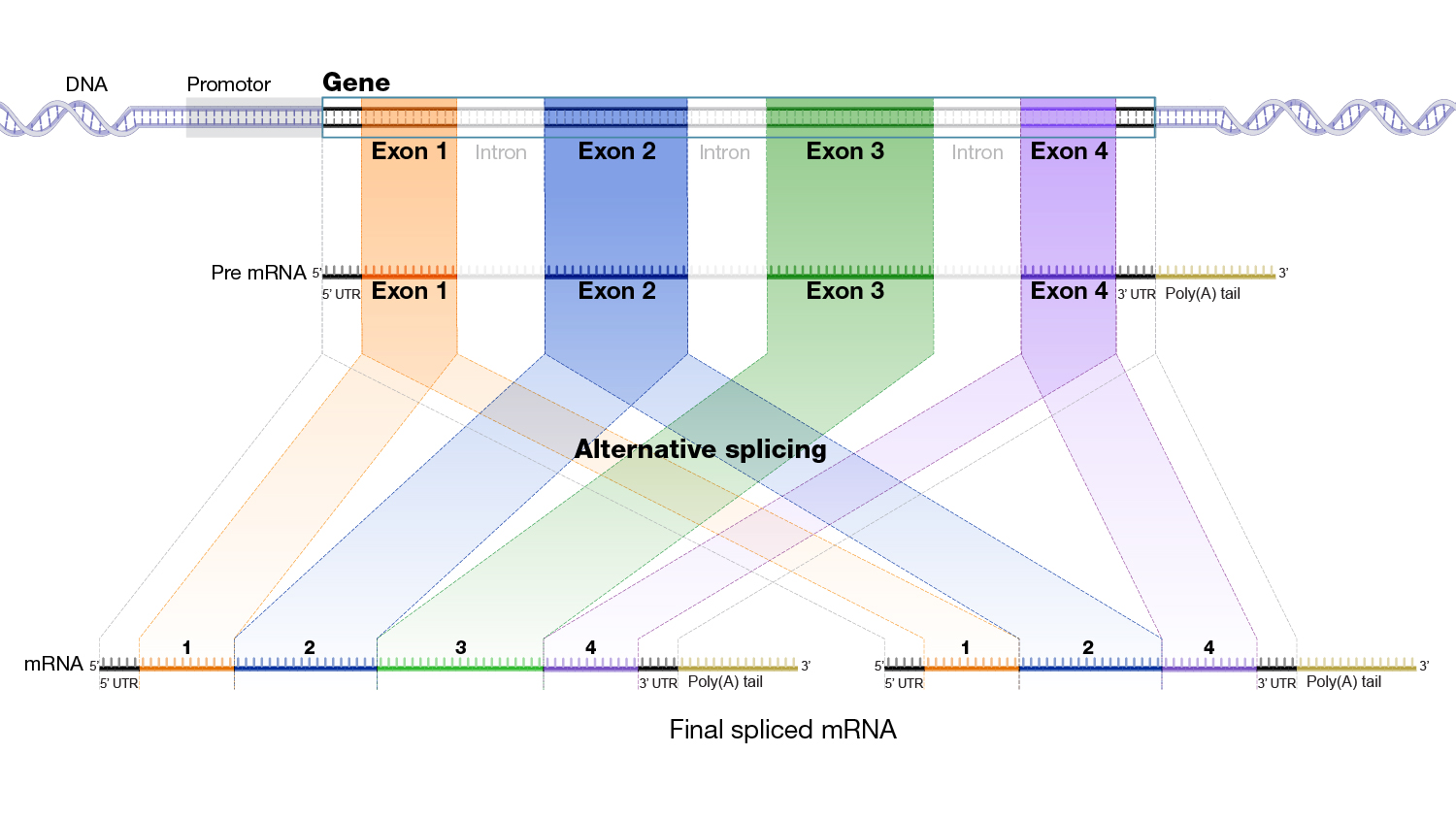
RNA can make proteins
Messenger RNA, called mRNA for short, is the type of RNA responsible for carrying the instructions for producing proteins.
mRNAs are transcribed from genes in the nucleus, the part of the cell that contains the genome. The mRNAs then travel out of the nucleus to the ribosomes, cellular machines made of RNA and protein. The ribosomes “read” the mRNA sequence three nucleotides, or a codon, at a time to build a protein. This process is known as translation.
mRNAs also share a few key features, such as a protective chemical structure on one end, known as the five-prime cap, and long string of A nucleotides on the other end. This is called the poly-A tail. When scientists want to study only the mRNAs in a cell, they use special tools to select only the RNAs that have poly-A tails.
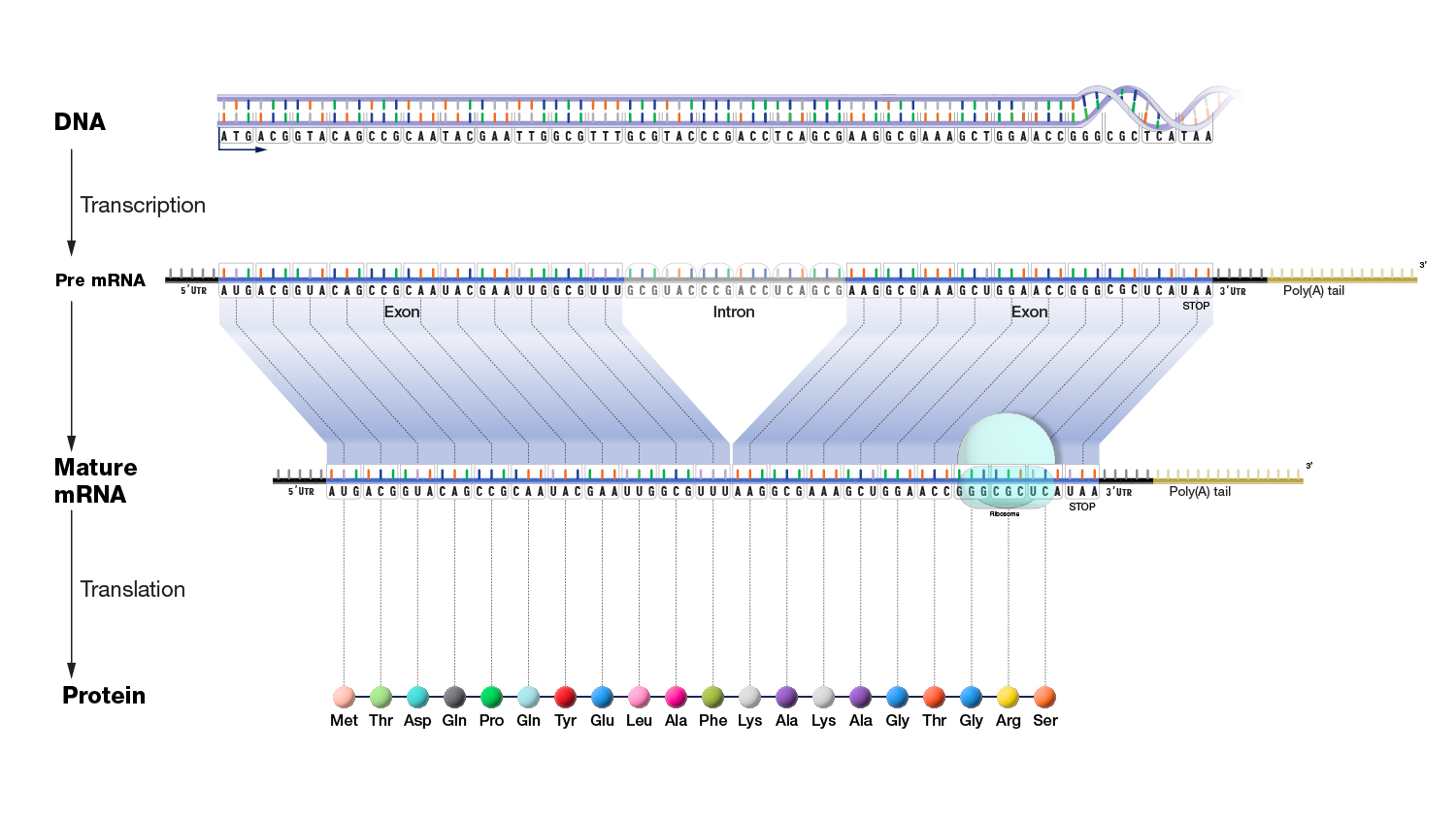
mRNA Vaccines are vaccines that contain mRNA molecules. The mRNAs in the vaccine encode a protein (or piece of a protein) that is found in a virus. When the mRNAs enter cells in the body, the cells use the mRNAs to produce virus proteins and display them to the immune system. This teaches the immune system to recognize the virus, promoting a strong response if the immune system encounters the virus, protecting the person in the future.
RNA can fold into specific shapes
Transfer RNAs, called tRNAs for short, assist in translation. Each tRNA corresponds to one of the 20 possible protein building blocks in humans. These building blocks are known as amino acids. As the ribosome reads each codon along an mRNA, the tRNA bring the correct amino acid, which is then added to the growing protein molecule.
Many types of RNA, including tRNAs, fold into specific shapes that help them function and keep them stable. Complementary sequences at different positions along the length of an RNA fold the molecule into loops and other complex structures.
tRNAs are folded into a distinct L-shape that helps them carry out their function. One end of the tRNA has a specific sequence to match a codon on the mRNA, while the other end of the tRNA has a site to carry the amino acid that will be added to the new protein.
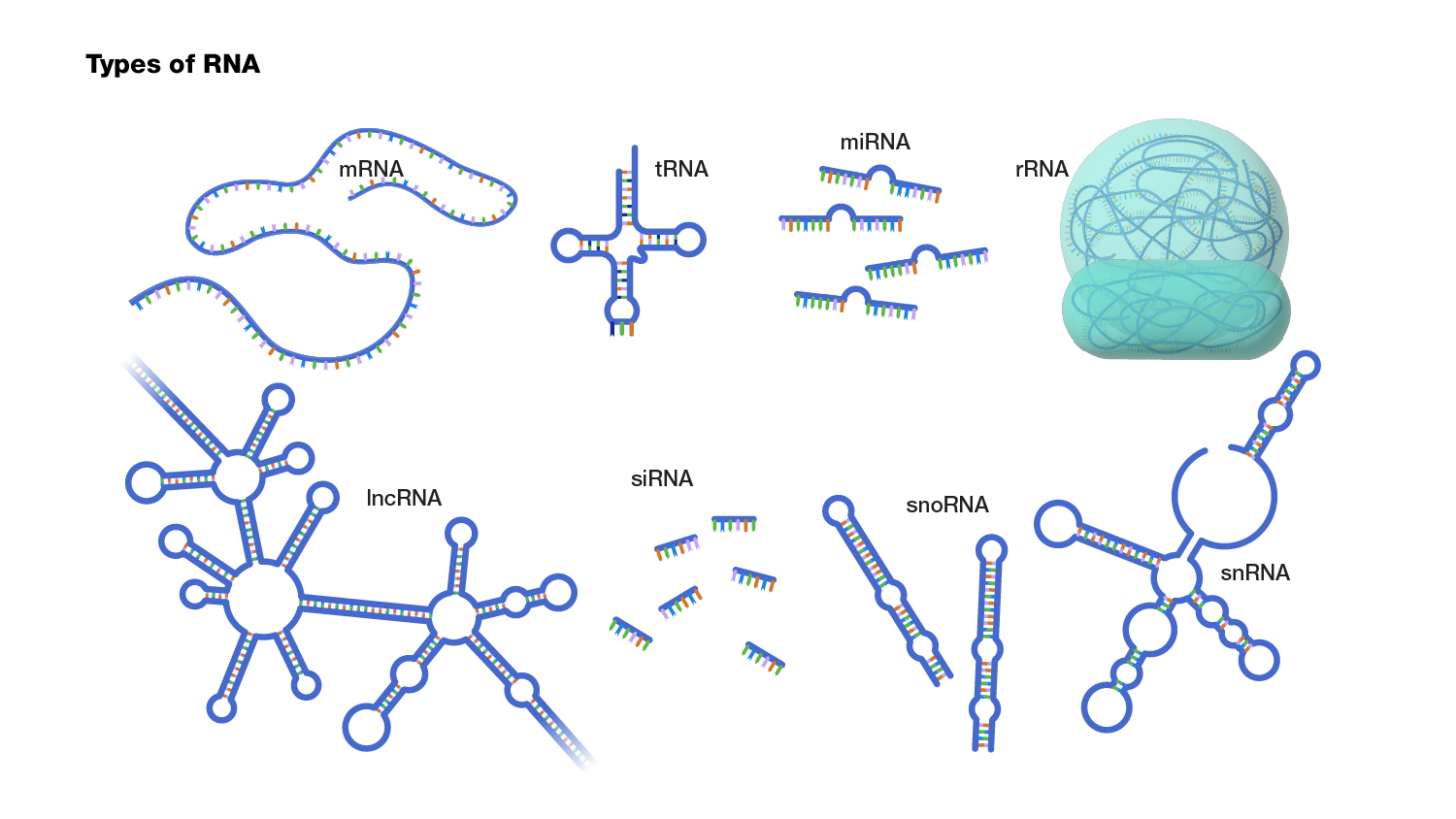 Folding Instructions: tRNA Paper Model
Folding Instructions: tRNA Paper Model
RNA can silence genes
Several types of noncoding RNAs regulate genes, including microRNAs, also known as miRNAs. miRNAs are short RNAs that regulate gene expression by binding to mRNAs. Each miRNA has a specific sequence that targets mRNAs from one gene. When an miRNA binds to an mRNA, the mRNA becomes unstable and gets cut into pieces. This stops the mRNA from being able to make new proteins. Some estimates propose that about a third of the genes in the human genome are regulated by miRNAs.
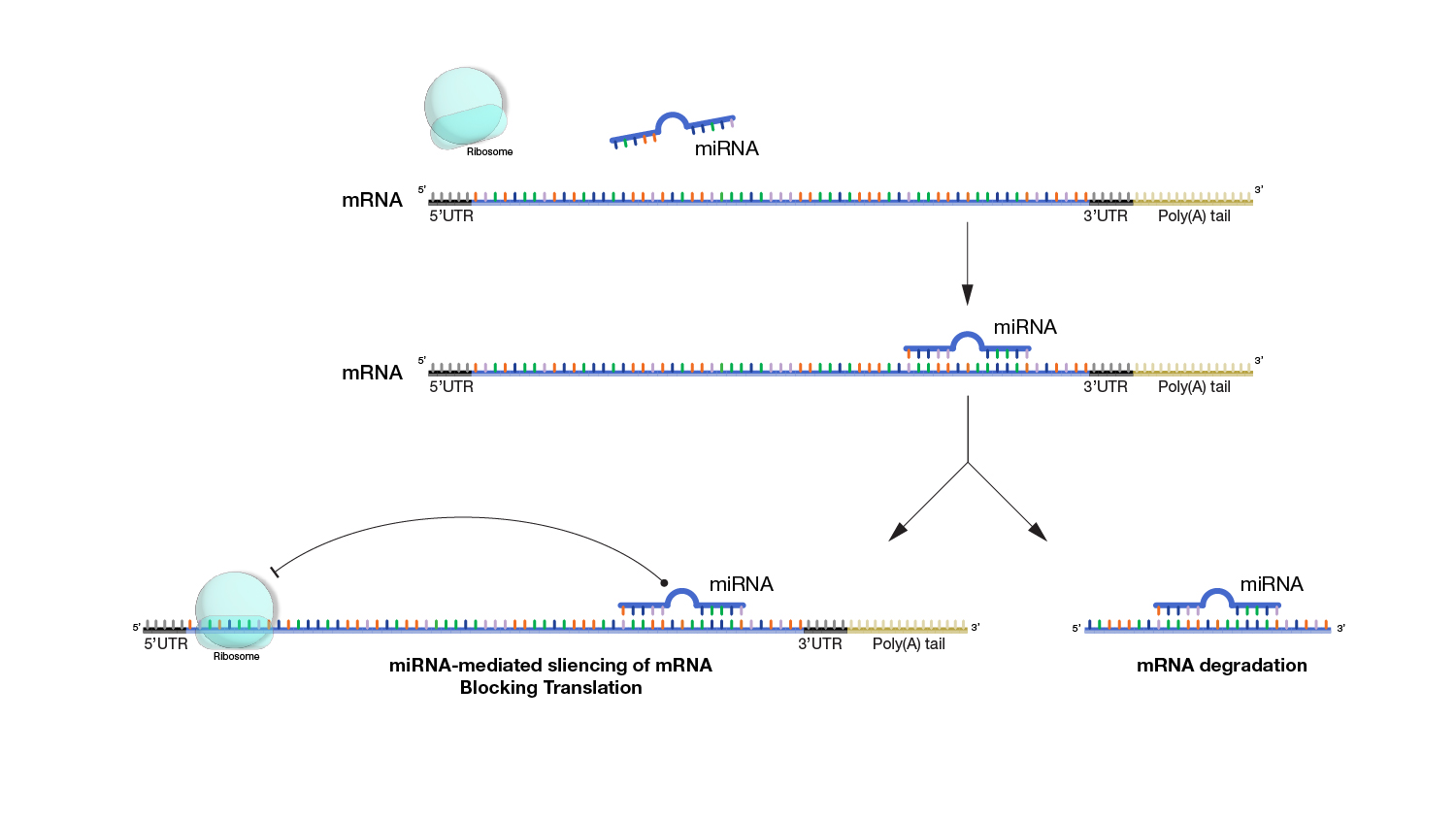
Some RNAs are still not well understood
Long noncoding RNAs, or lncRNAs, are a highly variable group of RNAs. While many lncRNAs are thought to have roles in gene regulation, their exact functions remain unknown, and this is an active area of research. Additionally, despite their name, some recent research has shown that some lncRNAs may actually encode tiny proteins.
What is a transcriptome?
A transcriptome is all of the RNA in a cell, just like the genome is all of the DNA in a cell. Sometimes, this term is used to only refer to the mRNAs, but mRNAs only make up a tiny fraction of the total RNA in a cell.
Scientists often look at transcriptomes because the transcriptome can reveal how that cell is responding to a specific change. A change in conditions — like something in the environment or the presence a disease — can cause the cell to adjust which types of RNA it is making and amounts of different RNAs.
Transcriptomes are studied using RNA sequencing. Scientists can sequence the RNA from one cell, known as single-cell RNA sequencing, or many cells from an organism. Even in the same organism, different types of cells have vastly different transcriptomes. This is because each type of cell uses different genes and regulatory mechanisms. Studying the transcriptome can help researchers understand the functions of genes and gene regulation.
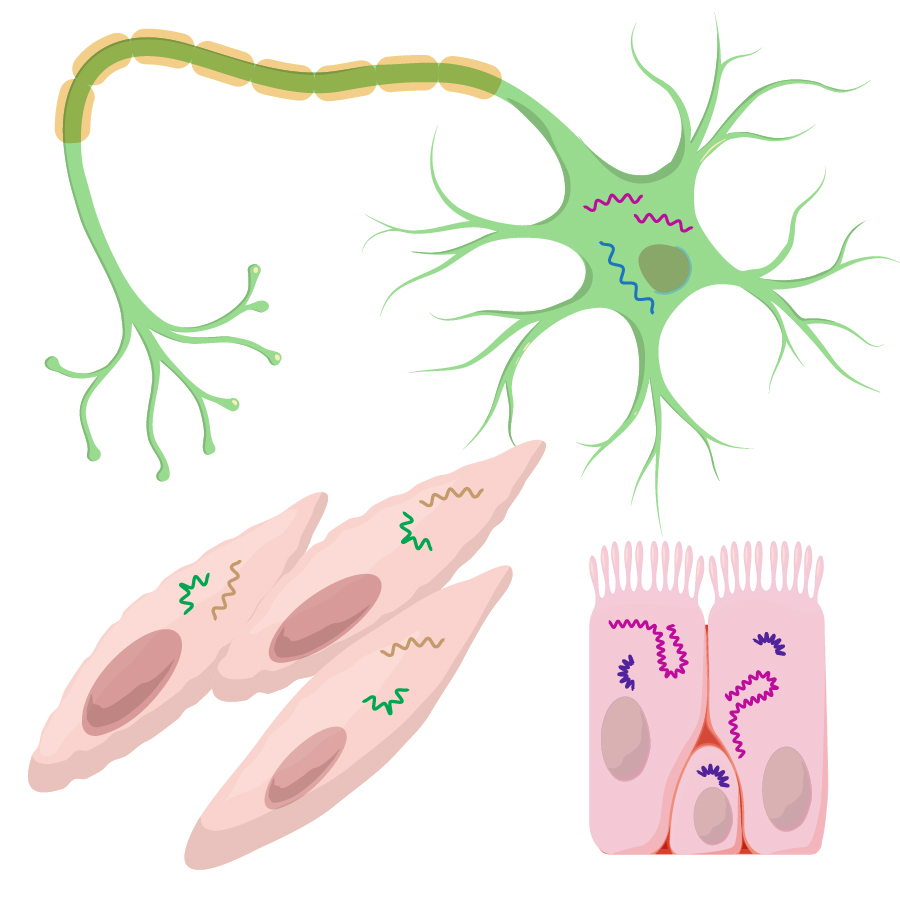
What are RNA modifications?
RNA modifications are changes that happen to the RNA after it is transcribed. This typically involves attaching small chemicals to specific nucleotides in the RNA. These chemicals can further change the function of an RNA.
Various modifications have been found on many types of RNAs, and some have been shown to be important for RNA function. For example, certain modifications help rRNAs maintain their structure in the ribosome, which is important for making proteins. Some other modifications help tRNAs carry amino acids to build new proteins, and changes to these modifications have been linked to disease.
Over 180 different RNA modifications have been discovered. Still, much remains unknown about RNA modifications, especially because the technologies available today only allow scientists to look at a small subset of all the possible ways RNA can be modified. Developing new methods to detect and study RNA modifications is an active area of research.

RNA can be genetic material
While DNA is the genetic material for all life, some viruses use RNA as their genetic material. Sometimes this is a single strand of RNA, and sometimes the RNA forms a double-stranded helix like DNA. Examples of RNA viruses are those that cause influenza and COVID-19. In some viruses, like the human immunodeficiency virus (HIV), the RNA is used to make DNA after infecting a cell. This process is known as reverse transcription.
A type of genetic element called a retrotransposon also uses reverse transcription. Retrotransposons are sometimes called “jumping genes,” pieces of DNA that can move around the genome. To move, retrotransposons are transcribed into RNA and then that RNA is reverse transcribed into DNA and inserted in a new genomic location.
Retrotransposons are very common in the genomes of humans and other animals. However, our cells try to stop retrotransposons from “jumping” to other genomic locations because they can be harmful if they land in the wrong place. An important noncoding RNA called a piwi-RNA targets the DNA and RNA of retrotransposons to stop them from moving.
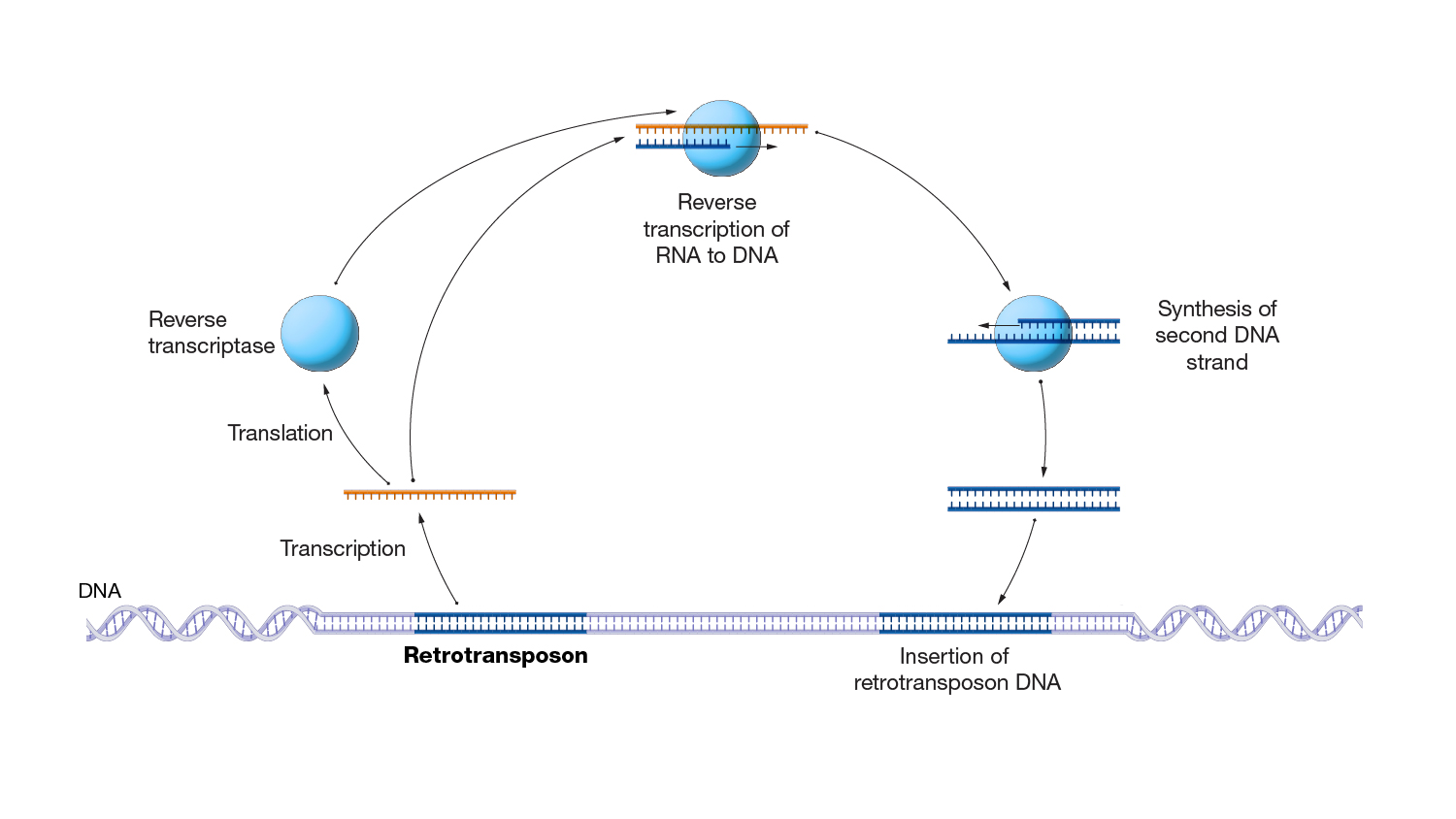
Last updated: May 24, 2024
